4 tips for choosing fabric for embroidery
February 1, 2022
Choosing the right fabric for embroidery can be an intimidating and confusing. So much of whats on the shelf at the craft store looks the same. It can be hard to tell whats a good choices for embroidery and whats not. In this post I’ll give you 4 tips for choosing the best fabric for embroidery.
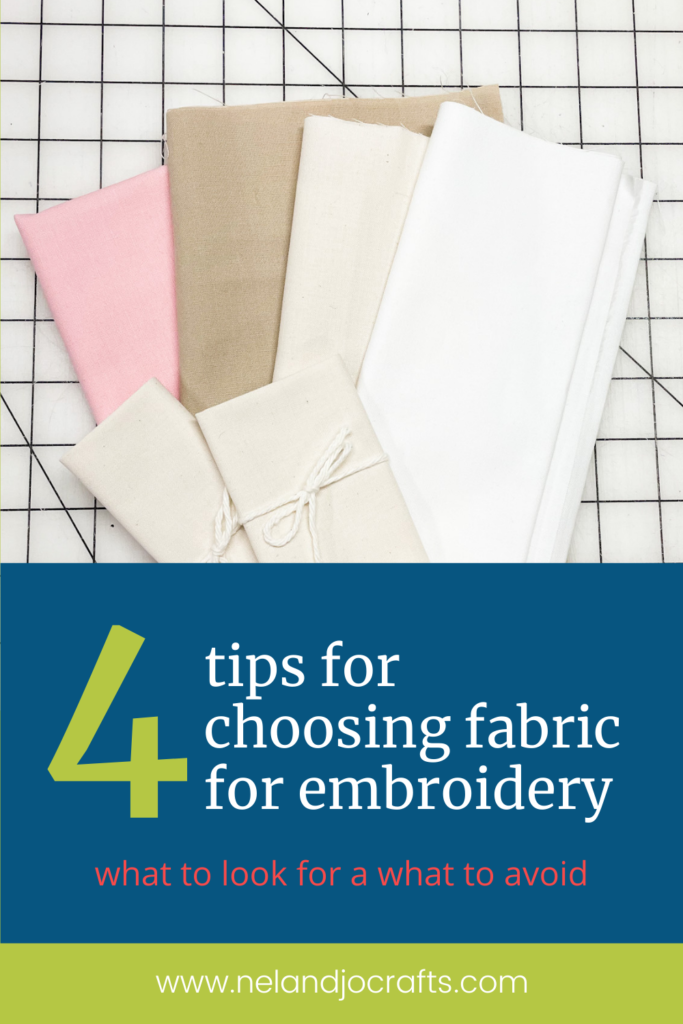
Why cotton fabric
For embroidery, I recommend using quality cotton fabric. Most stores that sell fabric will call out their higher quality cotton fabrics as “quilters cotton.” This is because quilters need quality fabric that will stand up to being cut, sewn together and then handled when finished. Quilters cotton is great for embroidery for 3 reasons.
- Quilters cotton has only a little bit of stretch in it. This allows you to get good tension of the fabric in your hoop while stitching, a must for accurate lines.
- Quilter cotton has a nice tight weave. This allows for precise needle points. A loose weave allows needle points to move as your thread is pulled through the fabric.
- Quilters cotton is tick enough to stand up to stitching, but light enough to be easy to pull your needle through. Very light fabrics will fall apart when poked by the needle. Heavy fabrics hold up to stitching, but a much more work to pull your needle through.
First, look at signs and labels
Fabric will be grouped by fabric type in the store. You want to look for the quilters section. If you can’t find a sign that says “quilter”, look for “cotton.” If you are still struggling, just ask an employee where the “quilting solids” or “quilters cotton” is.
At fabric stores, the fabric comes on a bolt. This means the fabric is wrapped around a piece of cardboard. One end of that cardboard piece will have a label. The label has all kinds of useful information. For our purposes, we want to look at what the fabric is called, what it’s made of, fabric width, and price per yard.
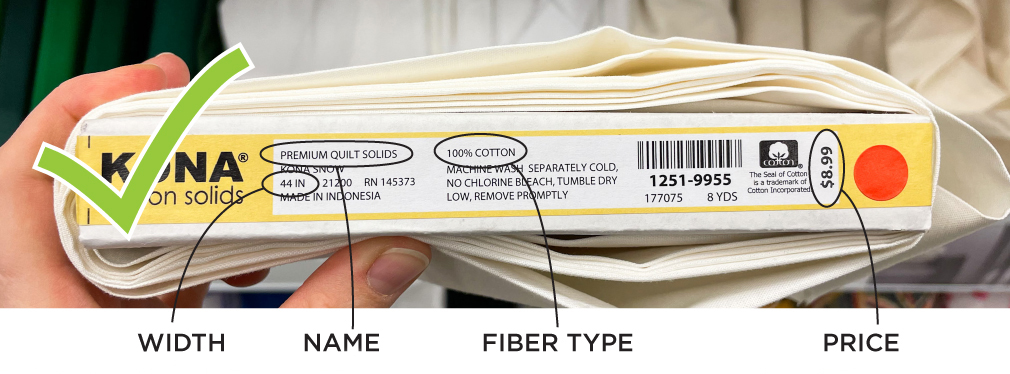
This example shows the fabric being called “Premium Quilt Solids.” Both “premium” and “quilt” are great indicators you have a good piece of fabric. Cotton fabric will say 100% cotton. Fabric width varies, but it should be about 42-44″ wide. Price per yard again varies by store and brand, but it should be about $7.50-10.00 (more if you are in a Quilt shop where they have nicer fabrics).
Second, check the fabric weave and opaqueness
If you have never looked at fabric before, checking the weave will require you to compare two fabrics. A tighter weave almost always means nicer fabric. A tighter weave also mean more accurate stitching. The one exception to this rule is Muslin. Occasionally, Muslin will have what looks like a tighter weave, BUT it will feel much thiner than a quality piece of cotton.
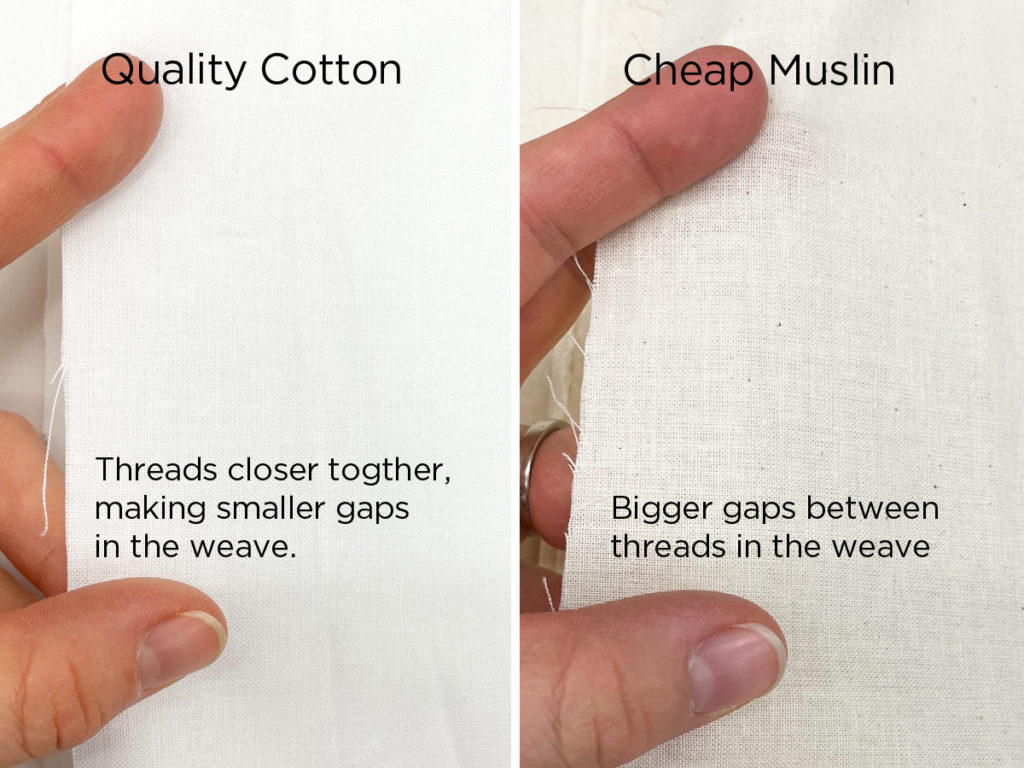
Next you want to check and see how much of your hand is visible under a single layer of the fabric. Cream and white fabric especially, are much less opaque than darker or colored fabrics. This is important for embroidery, because we don’t want to see any thread ends, or thread carry over place between shapes from the front. All we want to see is the stitching we did on the front.
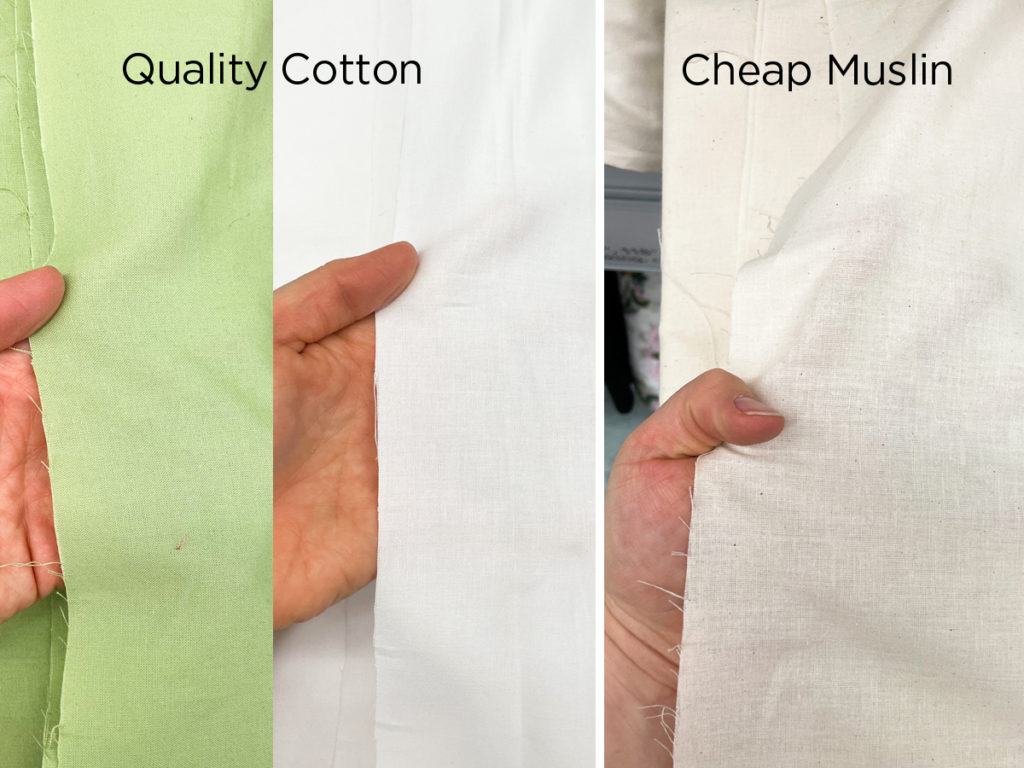
If you can easily see your hand through the fabric, you will be able to see your thread through the fabric as well. The less you see of your hand the less you will see of your thread. (It’s also worth noting that I have yet to find a white that isn’t, at least a little see through.)
Third, check your floss colors
The last check I do is less about the fabric quality and more about the fabric color. Even if you are stitching on white or cream, I recommend doing a quick color test in the store. All you need to do is lay your floss right on the fabric and check to make sure you like how everything blends. Color can be tricky to work with. What looked good as a floss color pallet might not look good once you add the fabric color. Most stores that sell fabric will also sell floss. All you’ll need to do is walk your bolt over to the floss section and pull your colors to test.
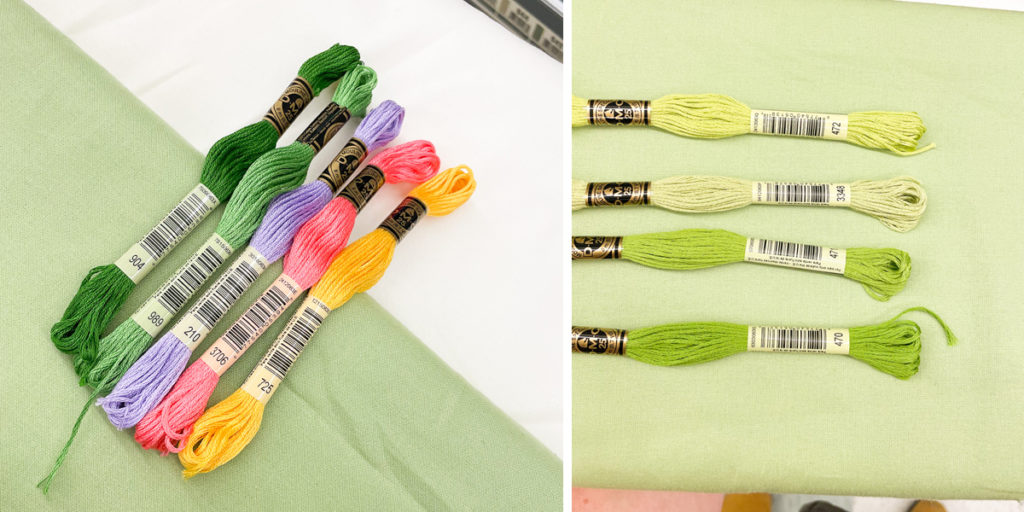
Fourth, get your fabric cut
Like I mentioned earlier, fabric is priced per yard (36″ or 3′ for those of you who don’t speak yardage). This does not mean you need to purchase a full yard a time. All you need to get is a section wide enough for your project. A simple way to know how much fabric to get is to take your hoop size and add 3″. Example: a 4″ hoop would be 4 + 3 = 7, you would need to buy 7″ of fabric.
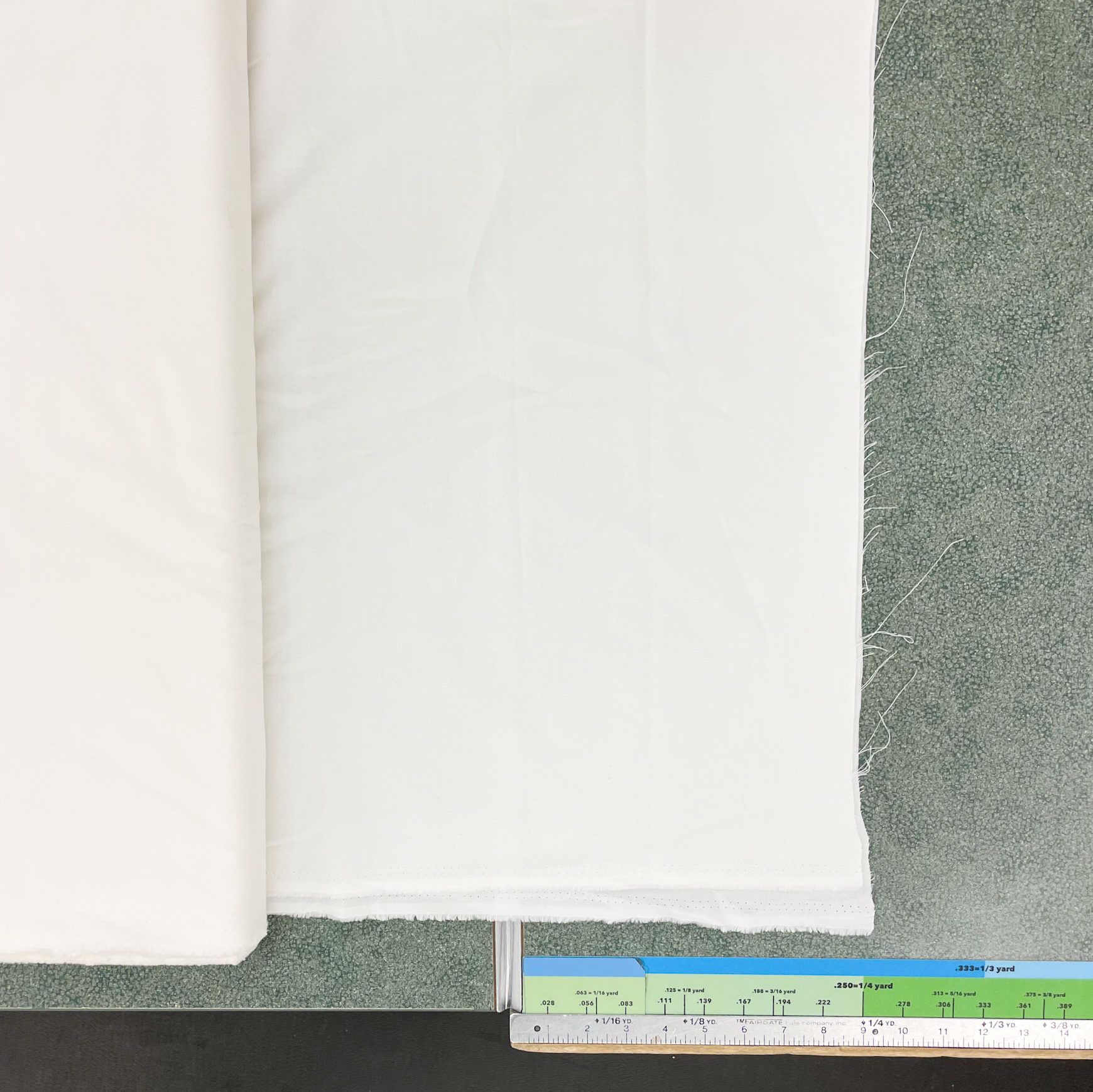
When you have found the fabric you want, you will take your bolt of fabric to the cutting counter. The person cutting your fabric will ask how much you want. Tell them how many inches you need and they will cut the fabric off the bolt for you. (FYI – some stores have rules about what increments they will cut fabric at, so you might not be able to get exactly the width you want. 90% of the time this will not be problem.)
Where to buy fabric for embroidery
Some common places to find fabric are, Hobby Lobby, Joann’s, some Michales, and local quilt shops. I have had the most luck finding affordable fabric at Hobby Lobby by using a 40% off coupon. (Hobby Lobby has a 40% off a pull price item coupon that you can use once a week. Just search fo Hobby Lobby coupon and it will come up.) You can also get fabric online. I would recommend Fabric Bubb for online shopping. They carry a fabric line called Kona which has 300+ solid colors to choose from. I use Kona fabric in all of kits.
Questions?
If you still have questions about fabric buying/picking please don’t hesitate to reach out. I am always happy to help. The easiest way to reach me is though my contact form which you can find here.
Thanks for the advice. I appreciate it.